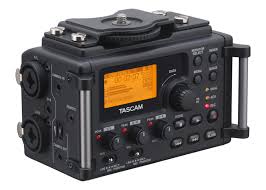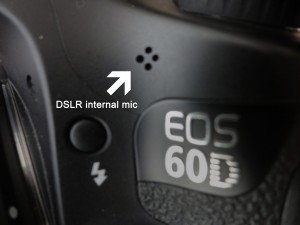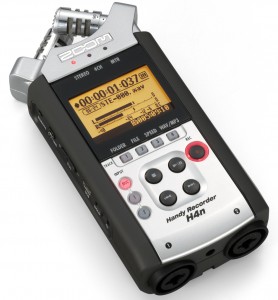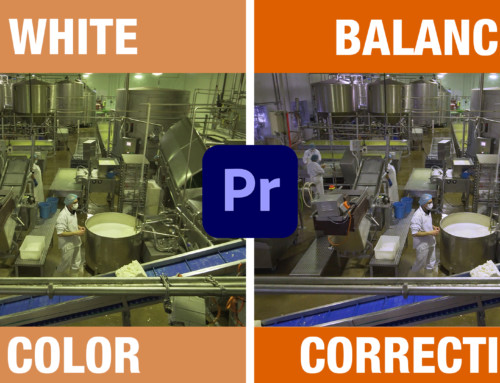We all know that the onboard mic for DSLR cameras is good for nothing more than a reference mic for syncing audio, however there are methods to get good quality audio results to when shooting DSLR video.
1. XLR pre-amps (No syncing required)
Using the Juicedlink XLR pre-amp attachment in an interview situation.
I have used a xlr pre-amp box from a company called juicedlink for the past year and can say when I bought it that having good quality audio straight into the camera was a great feeling. There is however like everything room for a few errors, the audio meters on the juicedlink are a little small and hard to judge at times, the need to remember before hitting record on the camera to check the cable from the juiced link is connected to the cameras mic jack and turned on. Sounds simple but it can happen and when it does, it only happens once and then you make a system of checking to ensure it doesn’t happen again. The audio quality is pretty good as the way this system works is by turning down the noisy gain of the camera and use the clean gain from the Juicedlink.
I mention Juicedlink a lot because it is the product I own and have used the most, I have used a cheaper version of a Beachtek product which I felt didn’t have enough control or features for “comfortable” reliable shooting. That was the old days and technology, innovations and new solutions come out so quickly (Yay) now products like the Tascam DR-60D has arrived and looks to be the best of both worlds as you have pre-amps, audio meters, can record straight into the camera and also to an SD card on the Tascam, looks to be a great solution.
Tascam DR-60D
Pros
- Closest you can get to a traditional video camera’s audio setup
- Compact all in one solution, attaches right to your camera
- Two channel audio
- No syncing in post!
- A way to monitor audio before it goes into the camera for older DSLRs
Cons
- Difficult to judge true audio meters on the Juicedlink
- Must run simple checks to ensure everything is connected
2. External audio recorders (Requires syncing in post)
I don’t personally have a lot of experience with this method but I know you have better quality control over your audio through all the stages of recording.
The audio meters are easy to judge, when you listen on your headphones you know that’s exactly what is being recorded, (where as the xlr pre-amps are monitoring the audio going onto their box as you can’t listen to the camera (unless you have a Panasonic GH3 or 5D mk3 for example which have a headphone jack).
The next challenge is syncing in post, this can ether be a challenge or simple depending on what software you have. Traditionally it was a matter of lining up the two audio waveforms and turning off the reference audio and keeping the clean audio. The game has changed the past few years where you have programs like pluraleyes and Final cut pro X that have the ability to automatically sync clips you select which I have found to be a real time saver.
Pros
- There is great software out there now to sync audio tracks and integrate into your editing workflow
- Clear representation on screen (meters) and what you are hearing in your headphones is what you will get
- More reliable
Cons
- Having to hit record on the camera and your external audio device
- Extra piece of gear to manage
What way do you use to get good audio for your DSLR video? or have questions/new information? (Technology moves fast!) let me know in the comments.






